Detailed description
| Detailed description |
| Operation mode |
The control module is alerted with a bus signal stating that the ignition is in the ON position or that the parking heater has been activated. After the control module has been alerted that the ignition is in the ON position, the following operating mode is assumed:
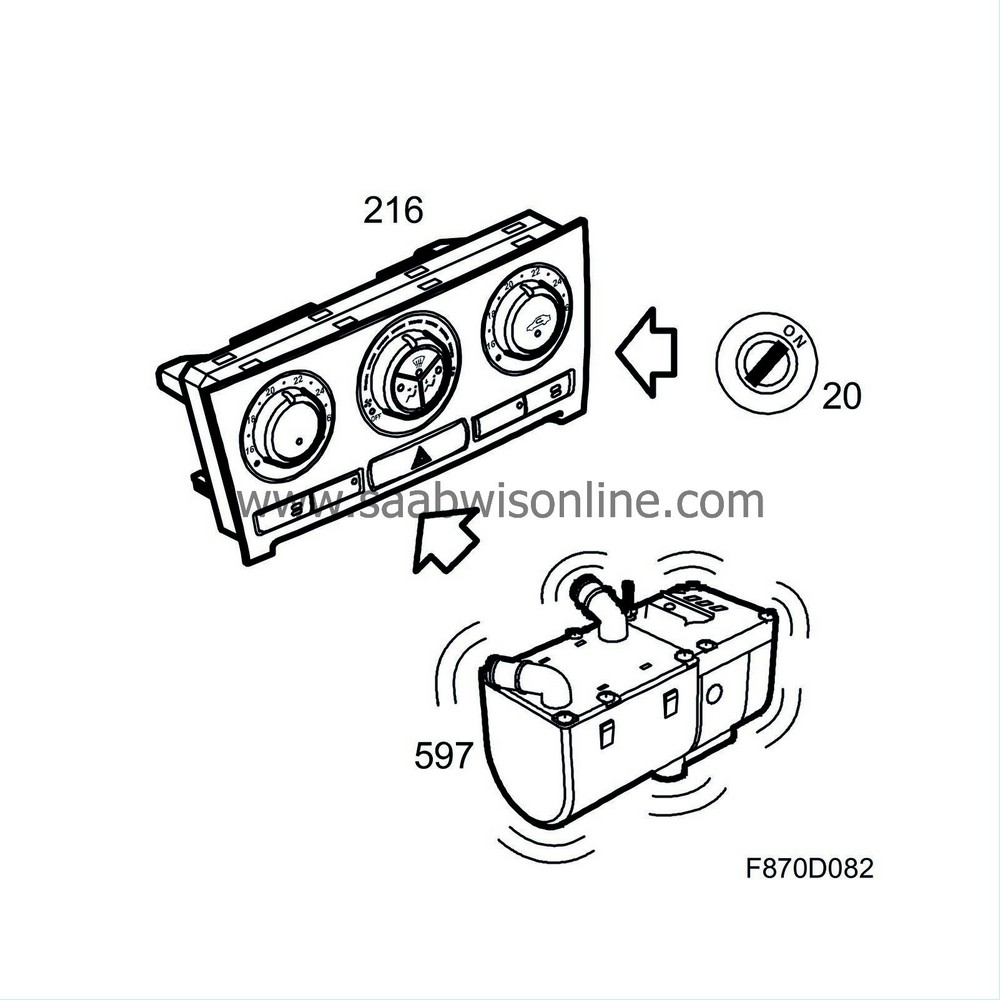
If the engine is still, no coolant is circulated through the heat exchanger, the A/C compressor is still and the generator does not charge. This means that the system cannot regulate the climate, the system should not use current unnecessarily and there is a risk that a stepping motor cold miss a step due to low battery voltage if the starter motor is not activated. For these reasons, the control module sets rear window defrost off, seat heating off, fan current 0 A and recirculation off. It also stops all stepping motors (manual adjustment is possible).

Engine is running
As soon as the engine has started, the control module guides all functions automatically if no manual settings have been selected or if customer SID (Saab Information Display) settings have been made.
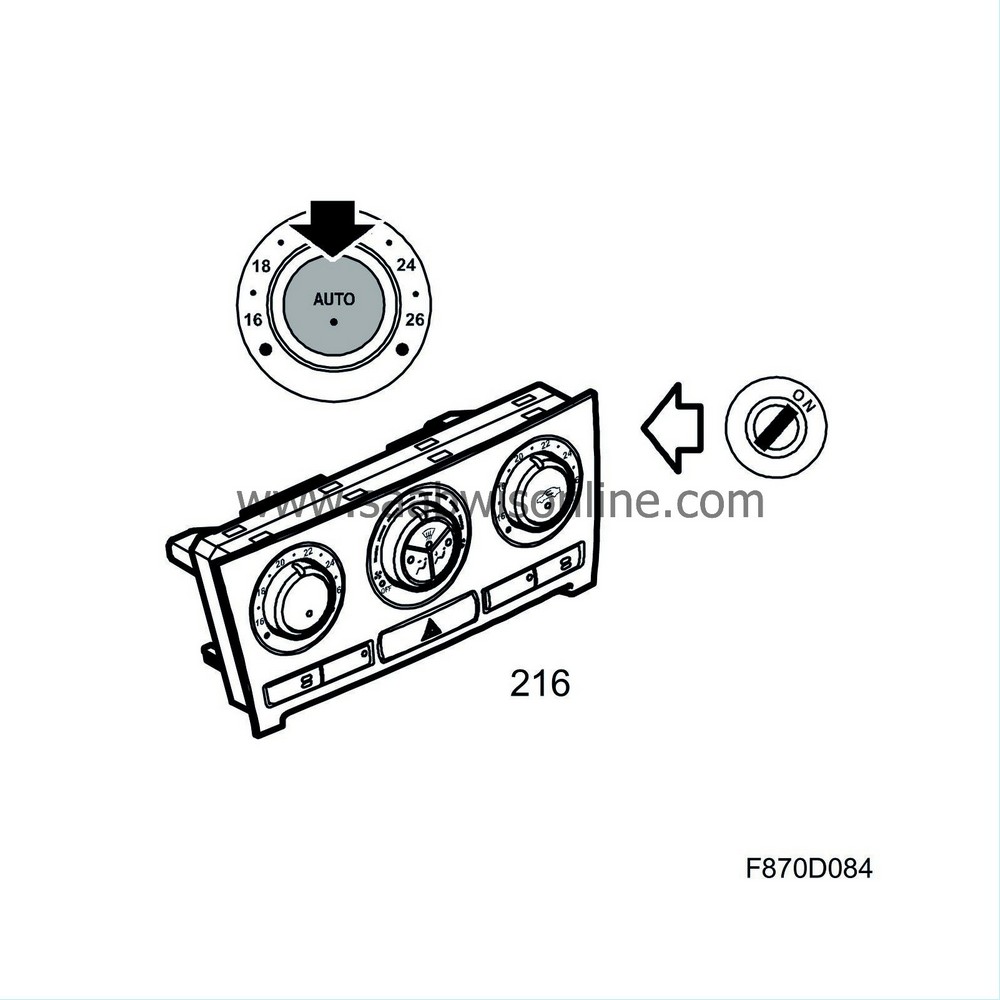
Ignition off
When the ignition is switched off, no buttons are operable, all stepping motors are stopped and recirculation off is selected after 10 seconds. Diagnostic communication is maintained if it was running when the ignition was switched off, but it cannot be restarted.
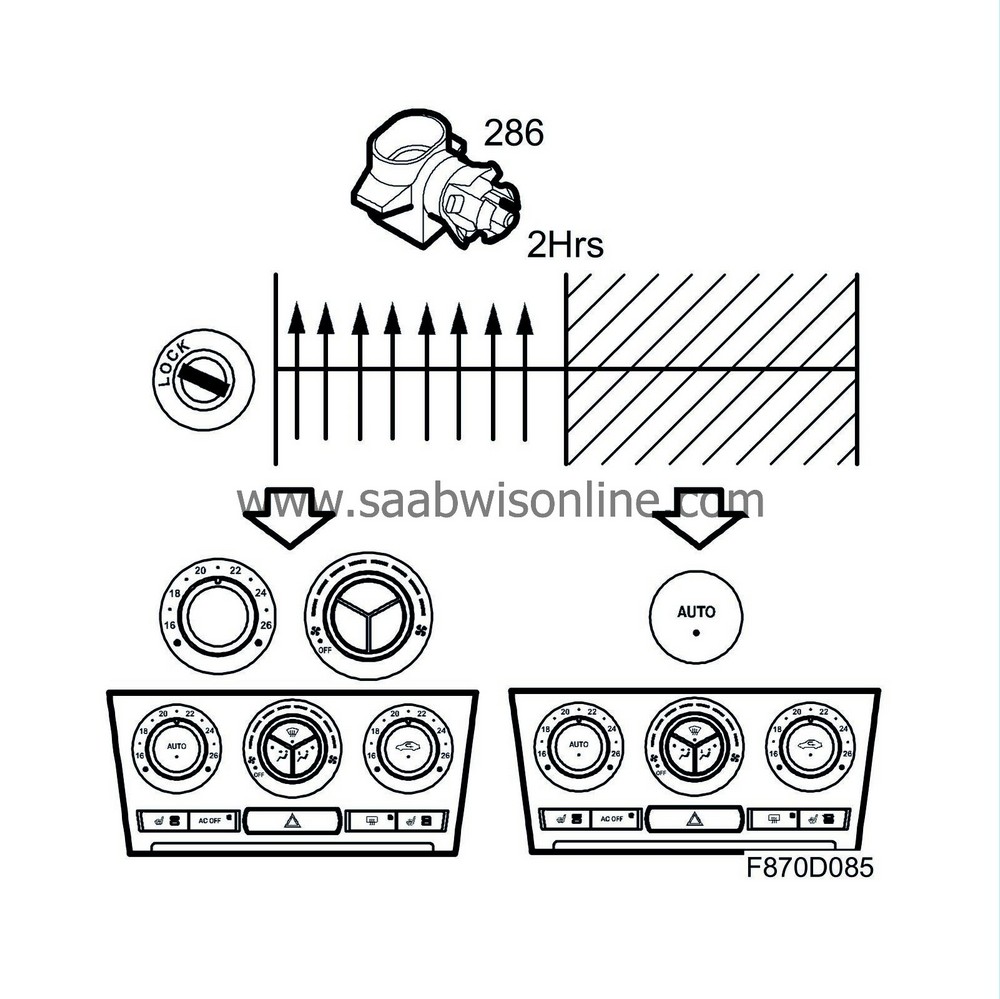
If the car is then locked, the panel and defroster damper will close and the floor damper will open fully after 9 minutes. After 10 minutes, the ACC control module will go into economy mode and the processor wakes up for a brief period every four minutes. This continues an additional 110 minutes. Within that time period (2 period), the ACC control module reads off parameters and calculates the conditions for a good passenger compartment environment.
If the ignition is switched on within these 120 minutes, the control module will retain any manual selections made the last time the car was driven.
After 120 minutes, the control module starts in AUTO mode with or without the user-programmed mode.
Warm start in Auto
If the ignition is switched on after having been off for less than 120 minutes, the start is considered a warm start.During warm start, cold air must first be blown out through the panel vents for the climate to be considered comfortable as soon as possible after start. If the calculated temperature at head height of the driver is more than approx. 5°C higher than what the driver set via the ACC unit's temperature knob, the warm-start function will be activated until the temperature at the head height of the driver is the same as the set temperature.
The warm-start function entails air distribution in panel mode and approx. 20 A fan currect directly after start. The value slowly climbs to 25 A as necessary.
Cold start in Auto
If the ignition is sitched on after 120 minutes, the start is considered a cold start.During cold start, the windscreen must be defrosted or demisted. The cabin is then warmed up as quickly as possible, when the outdoor air and coolant are cold, fan speed must be adapted so that the air temperature after the heat exchanger is always the highest possible.
If the calculated temperature at the head height of the driver is less than what the driver set using the ACC unit's temperature knob and the outside temperature is less than about 6°C, air distribution will be dependent on coolant temperature unit the defrost/floor mode has been assumed. See illustration.
Fan current will be based on coolant temperature and outside temperature as long as the calculated temperatures at the head height of the driver and front seat passenger are less than the set temperatures. See illustration.
| Temperature, separate for passenger and driver |
The control module adjusts cabin temperature with one stepping motor for the driver zone and one stepping motor for the passenger zone. The stepping motors are connected to dampers which mix warm and cool air.
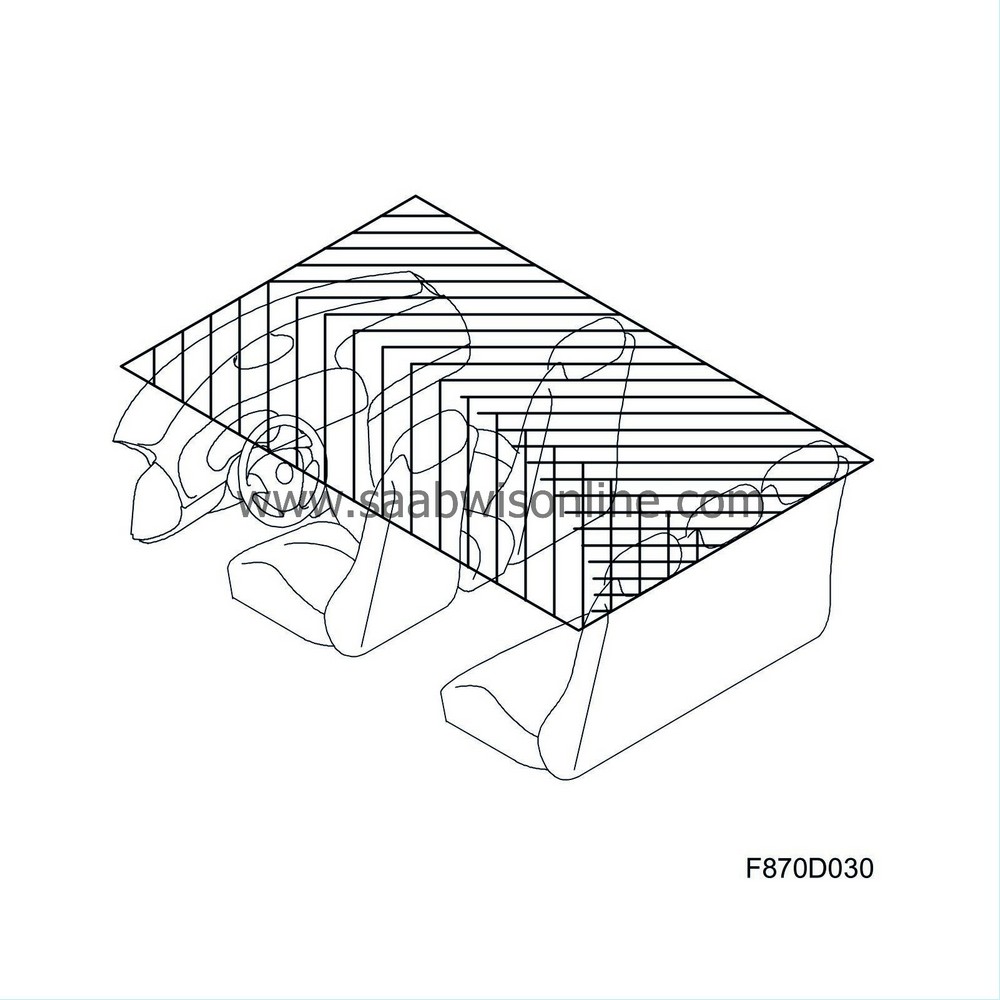
The current temperature at head height is calculated for the front seat passenger and the driver. The following is used as input values for this calculation:
| • |
outdoor temperature
|
|
| • |
time since the engine was last run
|
|
| • |
time since start
|
|
| • |
mixed air temperature
|
|
| • |
fan speed
|
|
| • |
intensity of the sun
|
|
The cabin temperature sensor's value is read when the ignition is switched on provided that ignition was off for more than two hours. The value is then not used again while driving. The calculated temperatures at head height are then compared with those set by the driver and passenger via the ACC unit display. Th eset temperature is corrected slightly primarily due to outside temperature so that the perceived temperature corresponds to that set. The difference between the perceived and actual temperature is due to air currents in the cabin and thermal radiation to and from body parts as well as from interior equipment and windows.

The mixed air temperature must be raised or lowered as soon as there is a difference between the requested and actual temperature in the zone. The control module turns the air mixing damper until the requested air mixture temperature is obtained. The control module reads the actual mixed air temperature from two sensors from each temperature zone. The sensors are mounted in the floor and panel ducts in the heating and ventilation unit. The value from the two sensors on each side is weighed together depending on how much the damper is open.
| Air distribution |
The heating and ventilation unit contains separate dampers for air distribution to the defroster, floor and panel vents. There is one damper for either side of the panel. Each damper is rotated by a stepping motor with a feed from the control module.
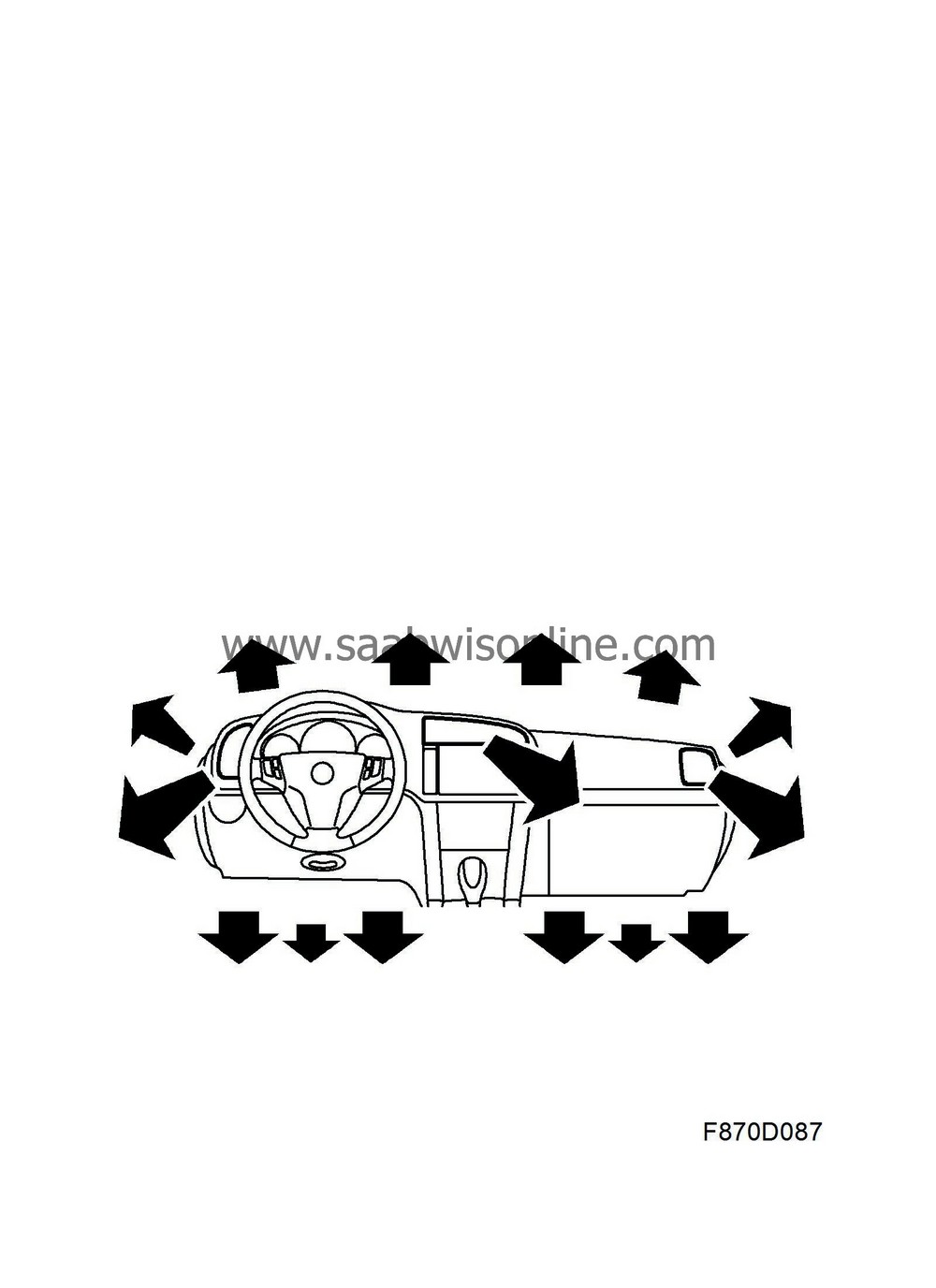
When the driver zone requires warmth, defrost+floor is selected; when cooling is required, the panel damper is also opened. If rapid cooling is required, the air distributed to the defroster is reduced, and if necessary also the air to the floor vents, increasing the flow of air through the panel vents. When the car is started in cold weather, defrost only is selected initially. Once the coolant has reached a temperature of 35°C, the floor damper will start to open. At 45°C, the floor damper opens more rapidly and the defroster damper is closed slightly to distribute more air to the foot wells.
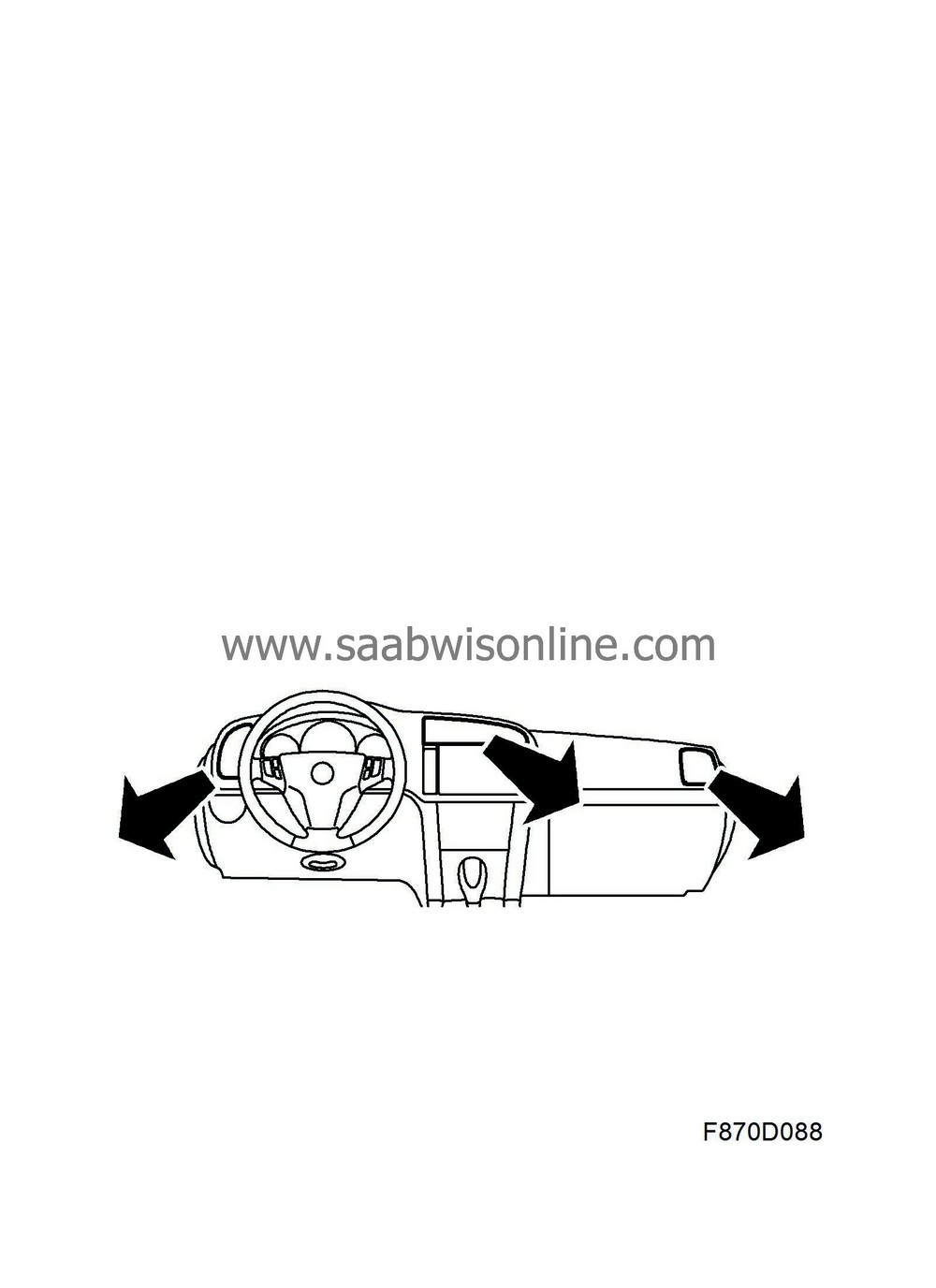
| Fan speed |
The control module reglates a fan control unit that feeds the fan motor. Fan current is lowest when actual mixed air temperature is the same as that requested for both temperature zones (no individual zone requires cooling or heating). Current is increased as soon as a zone requires cooling or heating. Upon start in cooling, the value is determined by coolant temperature and outside temperature. Fan current is limited if the engine is not running.

| Air recirculation |
The control module feeds a DC motor that turns the recirculation damper. The polarity of the motor is reversed to run in the opposite direction. If the ignition has been off, recirculation is selected no sooner than 15 seconds after engine start and only if outside temperature is over 25°C and both zones must be greatly cooled after started. Thereafter, recirculation is selected in the following cases:
| • |
at outdoor temperatures over 38 °C if the sun intensity exceeds 700 W/m²
|
|
| • |
at outdoor temperatures over 45°C (extremely hot)
|
|
| • |
at outdoor temperatures over 30°C and speeds under 15 km/h during an interval of 30 seconds. Fresh air is re-connected when speed exceeds 30 km/h during an interval of at least 45 seconds.
|
|
| • |
at outdoor temperatures over 25°C if desired mixed air temperature cannot be achieved.
|
|
| • |
at outdoor temperatures over 25°C if the coolant temperature exceeds 118°C (diesel 115°C). Fresh air is re-connected when the coolant temperature is reduced to 115°C (diesel 112°C)
|
|
Recirculation can be selected manually on the panel. A symbol on the display indicates when air is recirculating.
During ignition, fresh air is selected immediately.
| A/C |
The control module requests that the A/C compressor should start if the outdoor temperature exceeds 0°C and A/C OFF is not selected.

| Parking heater |
The parking heater is activated via SID. When the ignition is off, the following settings are used:
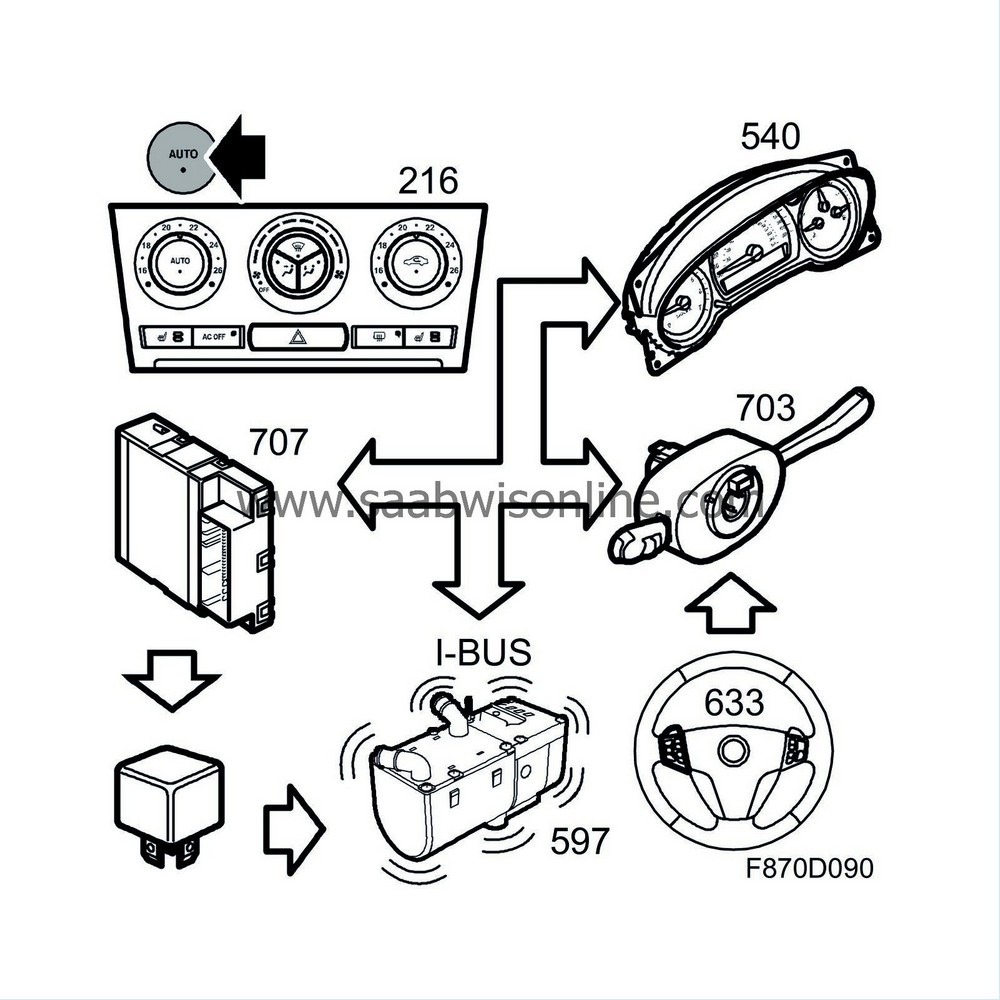
| • |
air mixing damper automatically adjusts according to temperature setting
|
|
| • |
defrost damper open followed by the floor damper as a function of the coolant temperature
|
|
| • |
recirculation damper in recirculation setting when the temperature is below -10°C, otherwise fresh air is selected
|
|
| • |
fan current 0A to coolant reaches 20°C and thereafter increases to approx. 5A
|
|
| • |
display shows temperature setting
|
|
| • |
manual selections can be made with all buttons except for heated seats, A/C or the electrically heated rear window. Fan speed can only be reduced.
|
|
The control module returns to normal function as soon as the parking heater is switched off or the engine is started.
| Calibration |
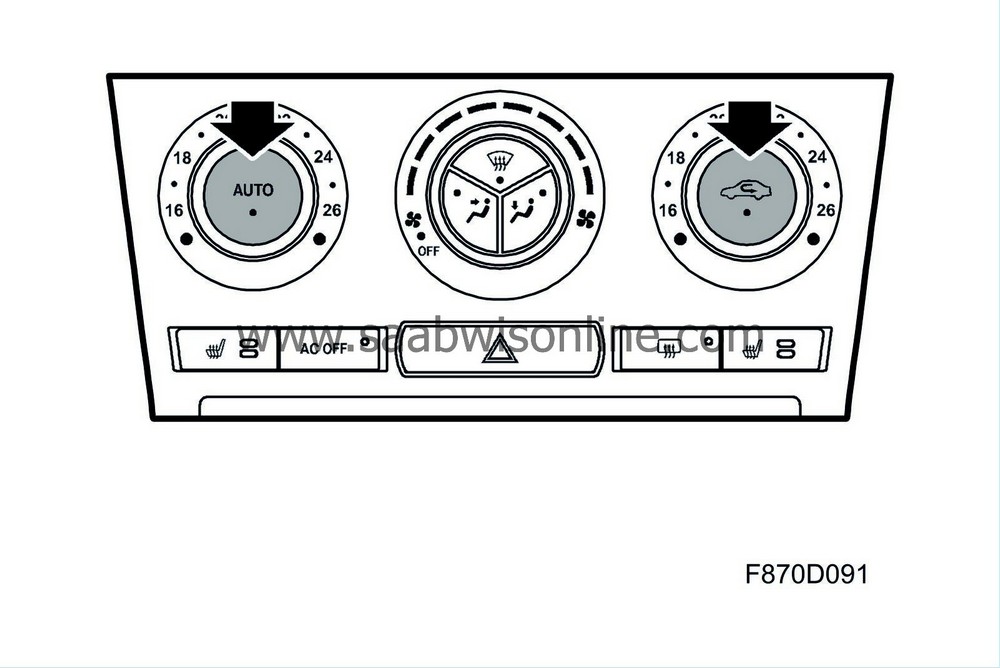
The stepping motors require no feedback to the control module (position sensor). By transmitting a specific number of pulses, the control module always knows how far a damper has moved. This presumes that the control module has calibrated itself by turning the damper to its end positions so that the control module know where the damper is located.
Manual calibration is possible by starting the engine while at the same time pressing the AUTO and REC buttons.
In order to ensure correct function, manual calibration is required if stepping motors have been replaced, removed or if the position of the damper has been changed. Calibration is also required if the battery has been disconnected.
There is automatic calibration after 40 operating cycles and the ignition being off for more than 120 minutes. This is done the 40th time at the 119th minute before the ACC control module goes into standby mode.
During calibration, any diagnostic trouble codes for the damper are stored in the ACC unit and can be read out using the diagnostic instrument.
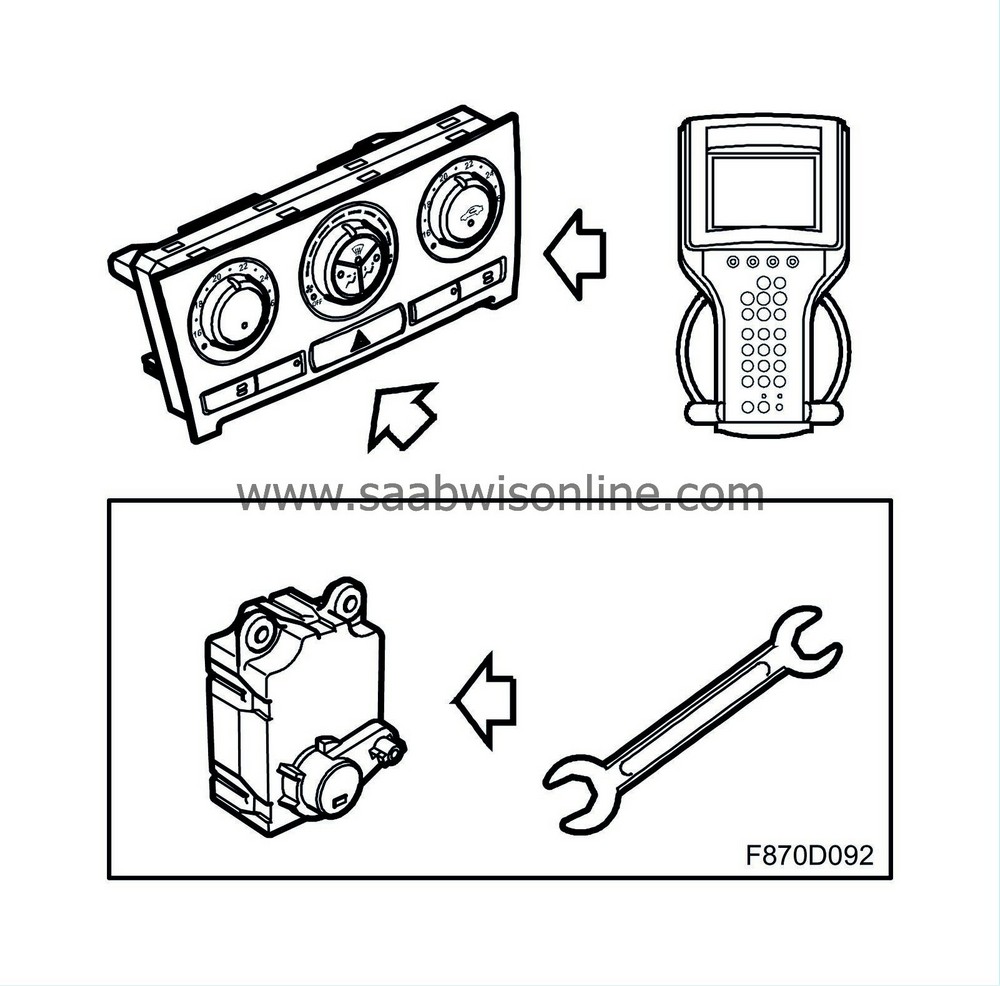
| Panel features |
Auto
All functions are automatically regulated to the set temperature. The LED in the AUTO button illuminates and confirms that the AUTO function is active. AC OFF, electrically heated rear window, recirculation, heated seats and temperature up or down can be selected without AUTO being deactivated.
Temperature increase or decrease
Selection of interior temperature for the driver and passenger zone in increments of 1°C between 16°C and 27°C (or between 60°F and 80°F). An indicator LED in the temperature knob indicates the selected temperature.The following values are used when the ignition is switched on:
Recommended setting is 21+/-3°C, or 69+/-5 °F.
If the value is higher than 26°C or 80°F, HI is indicated with a red LED and the system is set as follows:
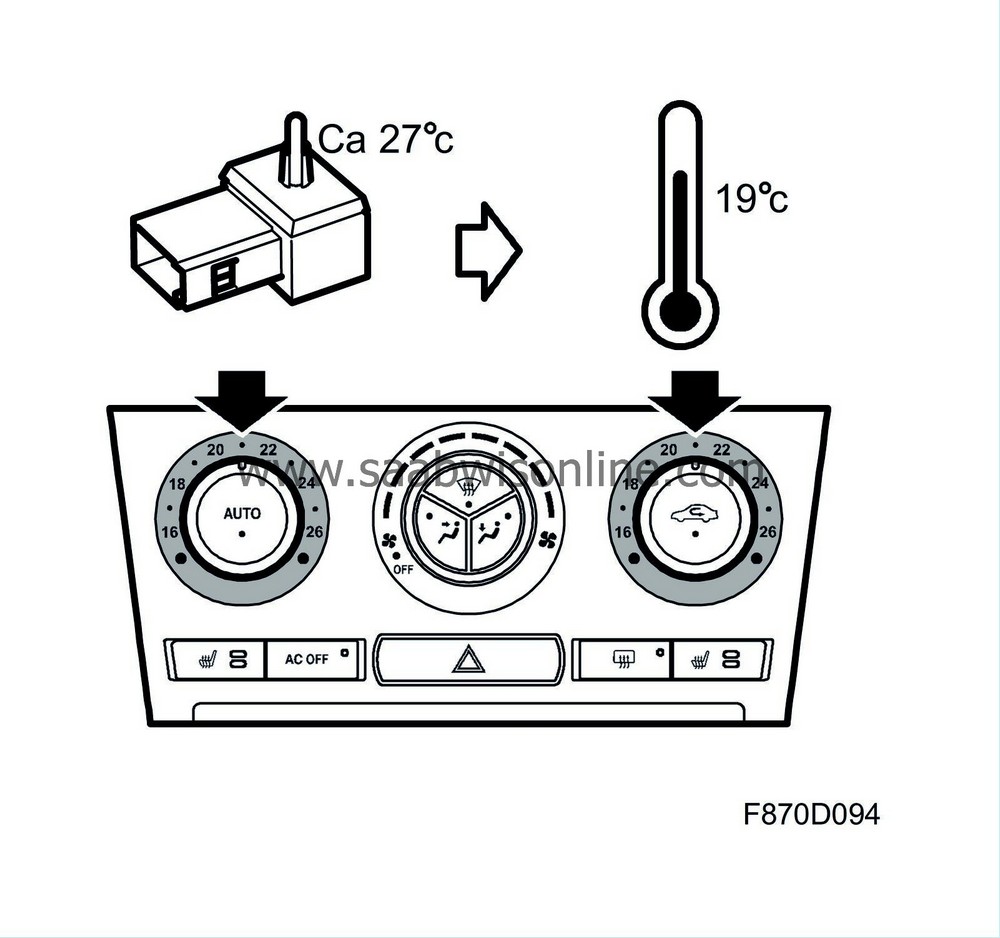
| • |
fan speed, level 6
|
|
| • |
air distribution in defrost/floor setting
|
|
| • |
air mixture in setting for full warmth for side in question. 100% appears on the diagnostic tool.
|
|
| • |
recirculation off
|
|
If the value is lower than 16°C or 60°F, LO is indicated with a blue LED (the passenger cannot select LO unless the driver has done so) and the system is set as follows:
| • |
fan speed MAX, level 8
|
|
| • |
A/C ON/OFF
|
|
| • |
air distribution in panel setting
|
|
| • |
air mixture in setting for full cooling for side in question. 0% appears on the diagnostic tool.
|
|
| • |
recirculation on when A/C is active
|
|
Using the diagnostic tool, the ACC unit can be adjusted to increase or decrease the temperature in the left and right temperature zone compared to that which has been set via the steering wheel control.
| Note | ||
|
The cabin temperature is always adjusted so that the experienced temperature corresponds to the setting. This implies that a thermometer normally displays a value which differs from the setting. |
Extended defrost
With one press of the button, the system is set as follows:
| • |
fan speed, level 6
|
|
| • |
AC ON
|
|
| • |
air distribution on defrost setting; 100% appears on the diagnostic tool
|
|
| • |
normal temperature control
|
|
| • |
recirculation off
|
|
| • |
electrically heated rear window on
|
|
| • |
indicator LED in AUTO button is off
|
|
Defrost panel
With another press of the button, the system is set as follows: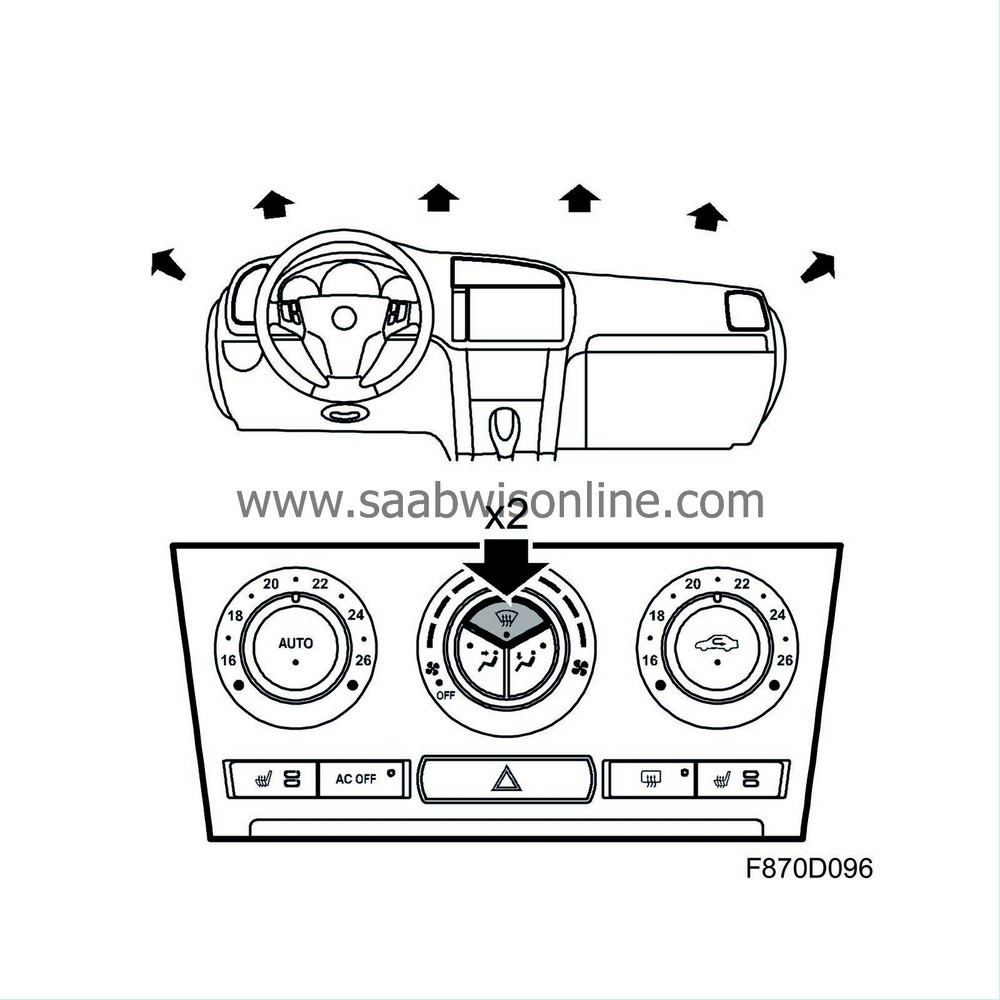
| • |
AC ON
|
|
| • |
air distribution in defrost setting
|
|
| • |
normal temperature control
|
|
| • |
the indicator LED in the AUTO button remains off
|
|
Defrost floor/panel or combined
The system is set as follows: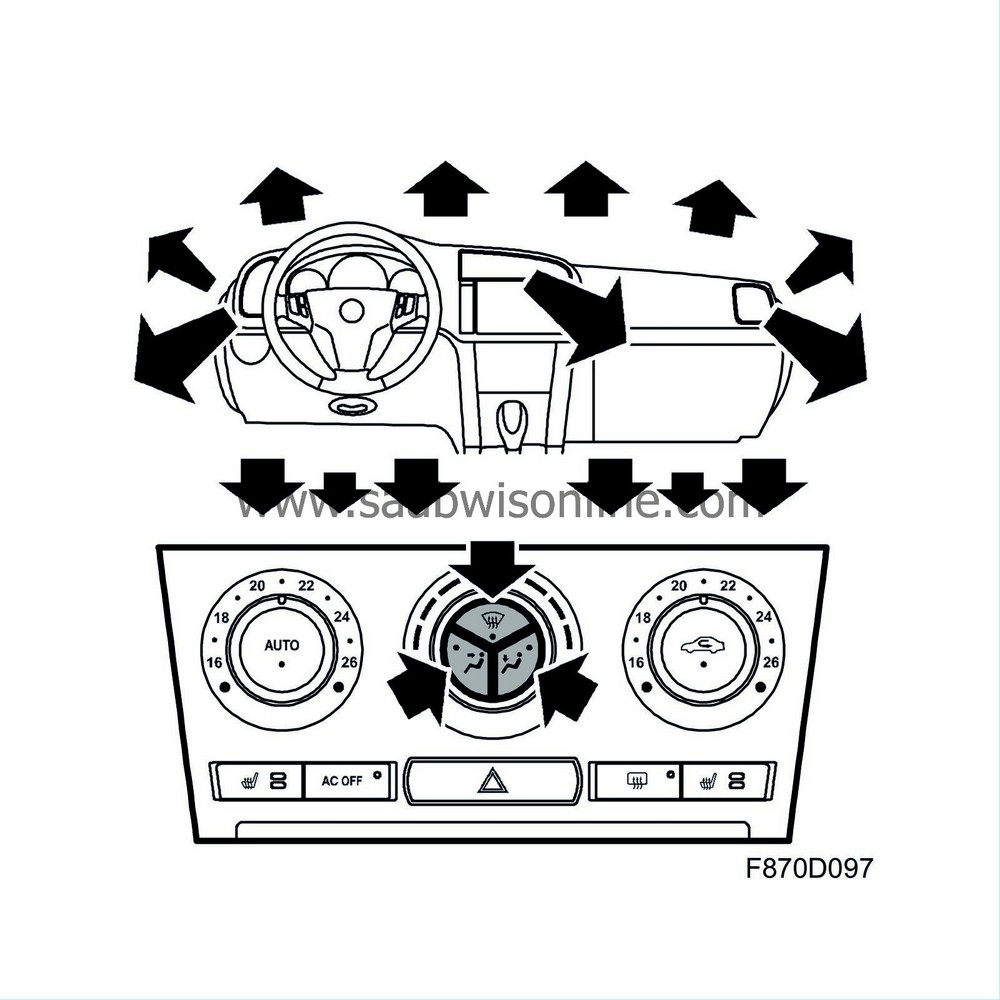
| • |
desired air distribution
|
|
| • |
the button LEDs confirm the selection
|
|
| • |
AUTO switched off
|
|
Air recirculation
The button can be manually shifted between recirculation and fresh air. The AUTO button must be pressed to restore automatic control. Note that the indicator LED of the AUTO button will be on even during manual recirculation.Recirculation is affected in the following cases:
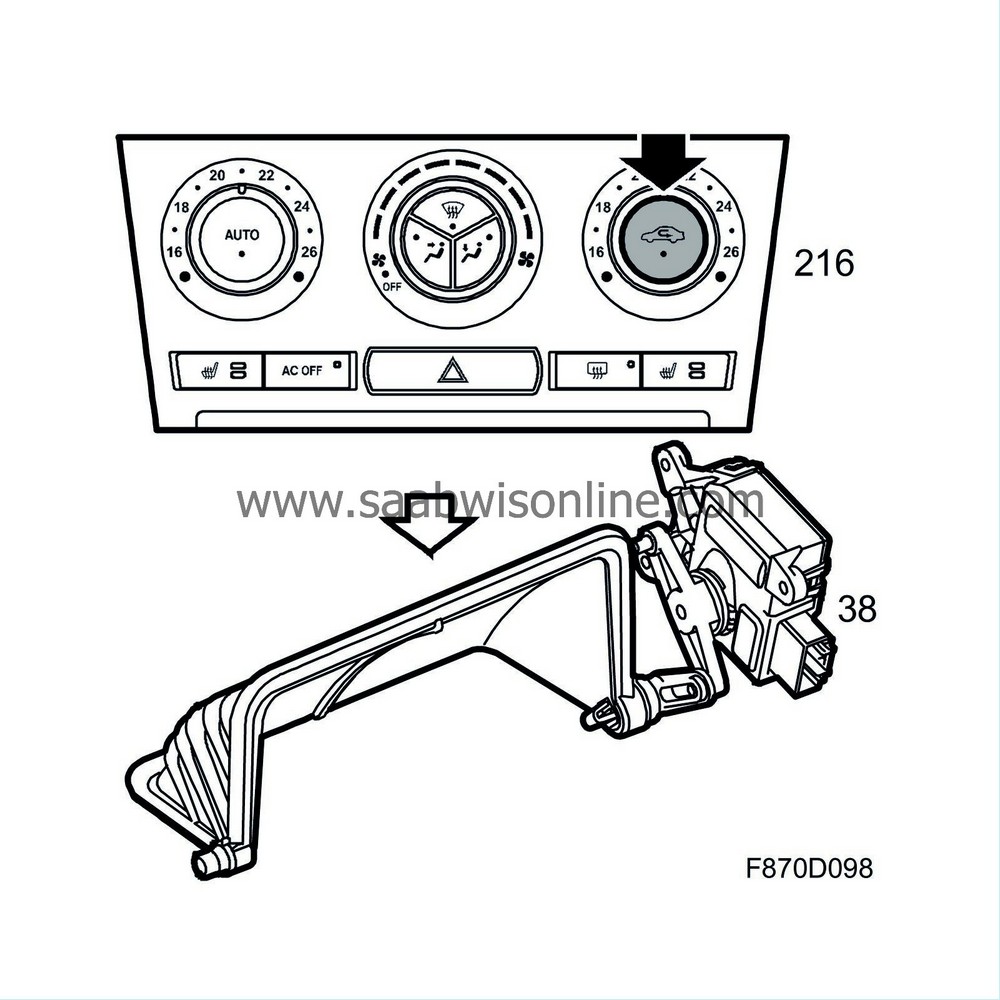
| • |
OFF if the defroster button is activated
|
|
| • |
ON if LO temperature and AC ON have been selected
|
|
The system is set as follows when recirculation is on:
| • |
recirculation ON
|
|
| • |
indicator LED on recirculation button illuminated
|
|
Heated rear window and door mirrors
Manual control :The rear window button is used to switch between rear window heating on and off. This is confirmed by the indicator LED in the button being on or off. The heated rear window cannot be activated in the OFF setting or until the engine has been started.
Activation duration is about 12 minutes.

| Note | ||
|
Note that the heated rear window's relay is connected after a delay. |
Automatic control :
Automatic start of rear window heating can be chosen in the SID settings. See Settings, ACC system .
Cabin temperature is less than 10°C and outside temperature is less than 5°C.
Rear window heating is active for about 12 minutes.
The system is set as follows when the electrically heated rear window is on :
| • |
rear window heating ON
|
|
| • |
indicator LED in rear window button illuminated.
|
|
Fan
Fan current is increased or decreased using the fan knob. The AUTO button must be pressed to restore automatic control.Fan speed is indicated with up to 8 levels around the fan knob. Level one is low speed (approx. 15 l/second) and level 8 is maximum speed (125 l/second).

Note that the amount of air may vary depending on the speed and position of the damper.
The indicator LED in the AUTO button goes out during manual selection of fan speed. If fan speed 0 is selected, the ACC still retains full control of all dampers. The indicator LED for AC OFF illuminates.

AC OFF
The button shifts between AC OFF ON and OFF. Note that the indicator LED in the AUTO button illuminates regardless of whether the AC OFF button is ON or OFF.The system is set as follows for AC OFF:
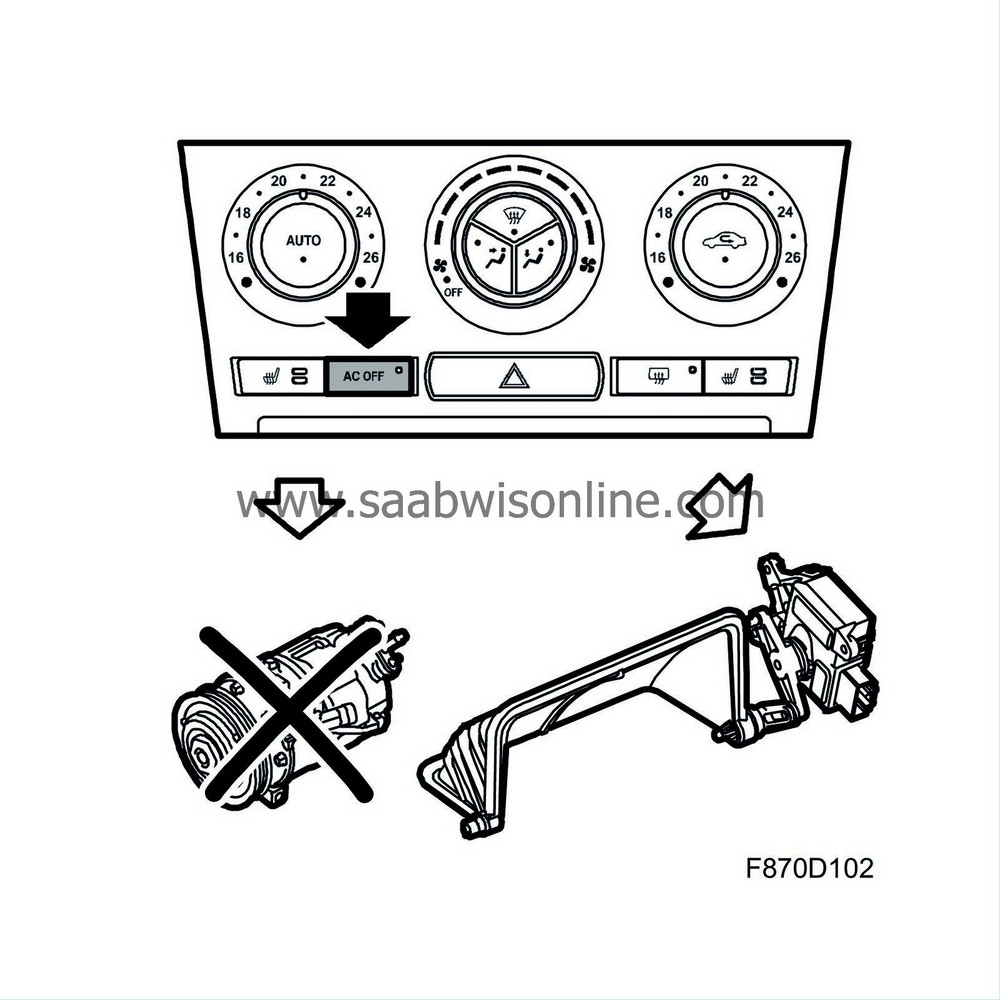
| • |
AC OFF
|
|
| • |
The indicator LED in the AC OFF button illuminates
|
|
Fan knob OFF
Using the fan knob, the system goes from level 0 (fan off) to OFF. the system is set as follows for OFF:
| • |
fan current 0 A
|
|
| • |
AC off
|
|
| • |
the air distribution damper stops in place
|
|
| • |
the air mixing damper stops in place
|
|
| • |
recirculation in fresh air mode (the function can still be selected manually)
|
|
| • |
electrically heated rear window off
|
|
| • |
buttons AUTO, DEF and RECIRC operable
|
|
| • |
the indicator LED OFF illuminates at the fan knob
|
|
| • |
seat heating, off
|
|
| ACC, CV |

Setting 1, soft top closed
When the soft top is closed, the ACC system regulates automatically based on the temperature selected via the knob.Setting 2, soft top open
The ACC system maintains the last selected position of the mixed air damperWhen turning to the right towards MAX setting, temperature increases in increments.
When turning towards the left towards MIN, temperature decreases in increments.
Setting 3, soft top closed
When the soft top is closed, the ACC system regulates automatically based on the temperature set with the knob.| Note | ||
|
When the soft top is folded down or all windows are lowered in a warm climate and high air humidity, then manual engagement of the air conditioning can result in condensation forming on cold surfaces, such as on air ducts. |
For further information on ACC settings, see Settings, ACC system .


